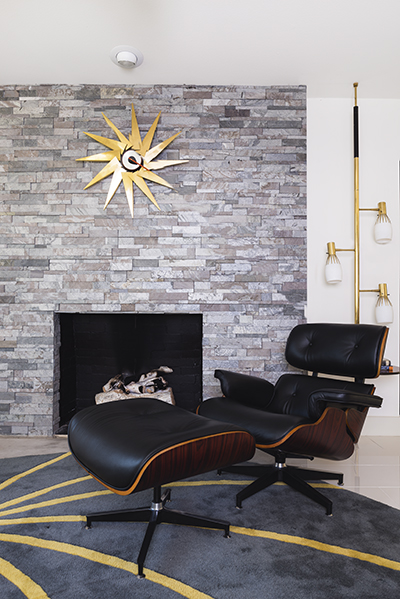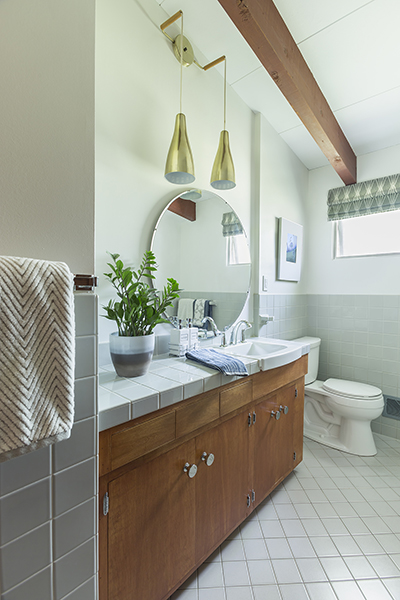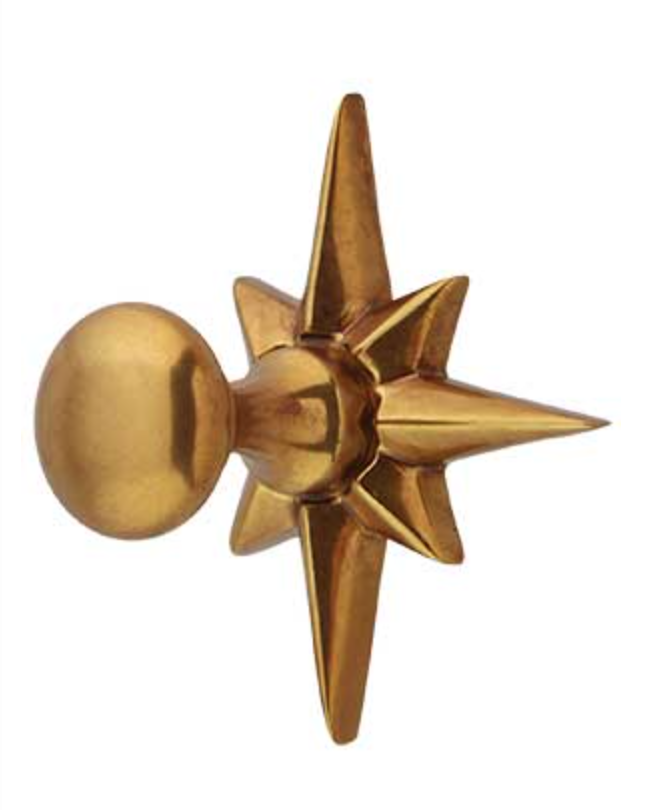
Of course, if you have something very special and don’t want to risk any damage, the safest bet is to have a professional take over. For most items though, cleaning at home is a safe and inexpensive option. Be sure to always test a small out-of-the-way area on your item with some of the cleaning solution before applying all over. And when using a product, always read the label to be sure it’s compatible with your vintage treasure. Now let’s get cleaning!
Leather
Before attempting any leather treatment, use a microfiber cloth (or something soft that won’t leave behind any lint) to wipe down the item—removing excess dirt and dust. To get rid of small spots from stray pens or other little blemishes, try using a cotton swab dipped in rubbing alcohol.
Looking to keep your leather moisturized and supple? A solution of 1 part white vinegar and 2 parts linseed oil will help. Simply combine the ingredients in a lidded jar, then shake well. Apply using a soft cloth, let sit for 12 hours, then buff. The result is refreshed leather ready to take on a new season.
For more leather care tips and tricks, click here.

Silver
Nothing quite shines like real silver, but it tarnishes so quickly! Many home methods to revive your silver revolve around the same few ingredients, but adding vinegar to the mix speeds up the process.
Combine 1 tablespoon baking soda with 1 tablespoon sea salt in an aluminum baking dish (or a dish covered in aluminum foil). Slowly pour ½ cup white vinegar into dry ingredients, then add in boiling water. Place your silver inside, ensuring it’s touching the foil. Remove with tongs after about 30 seconds—long enough for most pieces. Use a rag to buff any further trouble spots, leaving your silver shining and ready for the next dinner party!
For more detailed instructions, click here.
Copper
Oh beautiful, beautiful copper! Lacquered copper has a protective layer that increases shine, resists tarnish, and makes cleaning a bit easier. Just a wash in warm soapy water should be the trick for those coated copper pieces—gentle scrubbing for any trouble spots.
For unlacquered copper, dip a lemon half into either course salt for cookware or table salt for smaller pieces. Use circular motions as you scrub, rinse with warm water, then dry with a soft cloth. Buff to a shine with a clean rag, then display your vintage copper casserole molds with pride.
For more copper care and cleaning info, click here.

Wood
For everyday maintenance, products like Orange Glo 2-in-1 Clean & Polish or Murphy’s Oil Soap are the best options. To avoid product build-up, always apply cleaner to a soft cloth and not directly to the wood.
When deeper cleaning is needed, dampen a cloth with a weak solution of water and dish soap. Wring out the cloth well and wipe down the piece without oversaturating. Dry thoroughly with a clean cloth to finish and your boomerang-shaped walnut coffee table will be ready for another cocktail party!
For more ideas on refreshing your favorite wood pieces, click here.

Brass
Brass can acquire an attractive antiqued look due to its patina, but it can get very dirty. Note that brass is not magnetic so if a magnet sticks, you have some other type of metal and may need to consider another cleaning method.
Using only two ingredients you probably already have in the kitchen, you can polish up that brass starburst doorknob in no time! Mix ½ a lemon with a teaspoon of baking soda until you have a paste. Use a soft cloth to rub gently into your brass treasure. Make sure to completely rinse off any leftover paste and dry with a clean cloth or towel.
For more brass care and cleaning info, click here.













